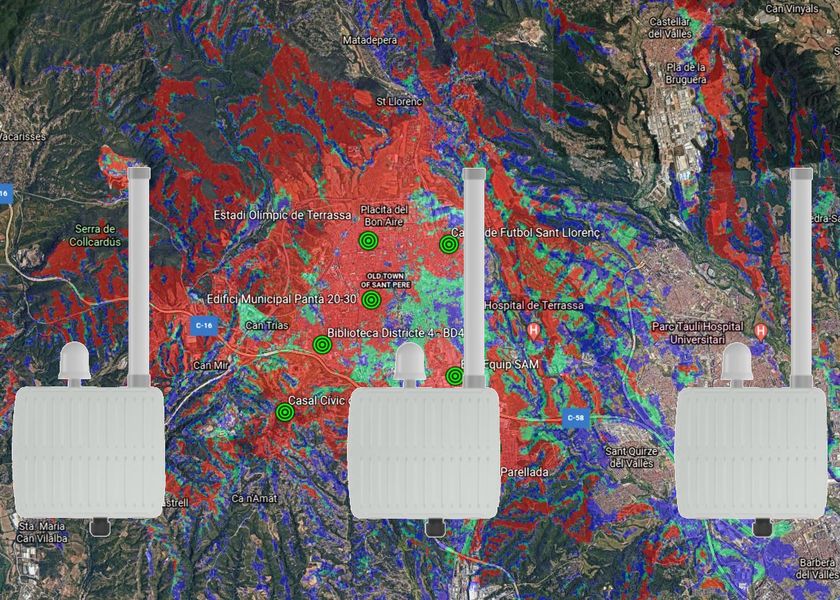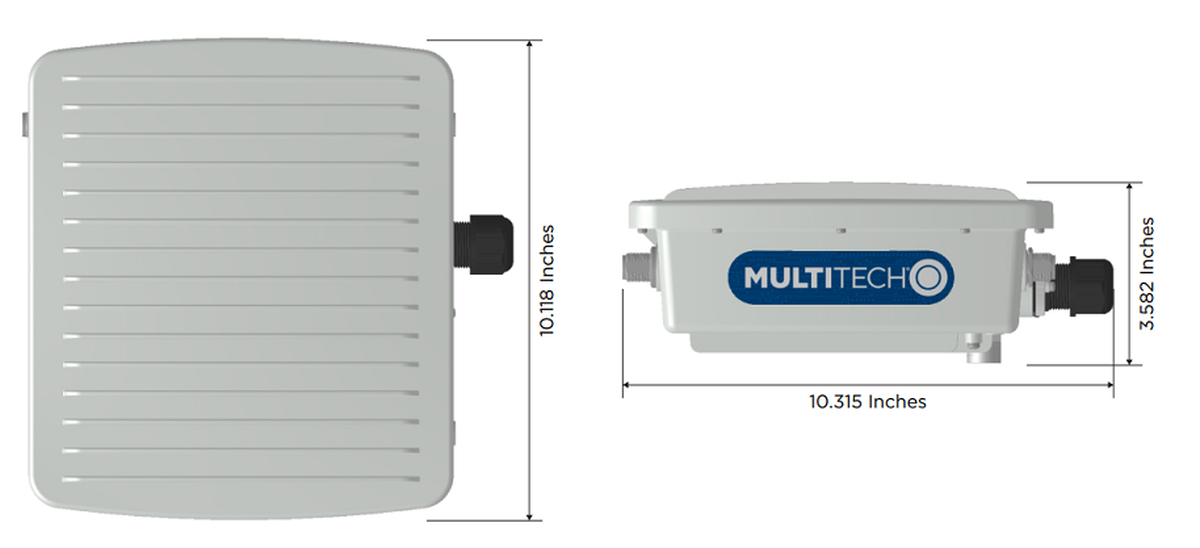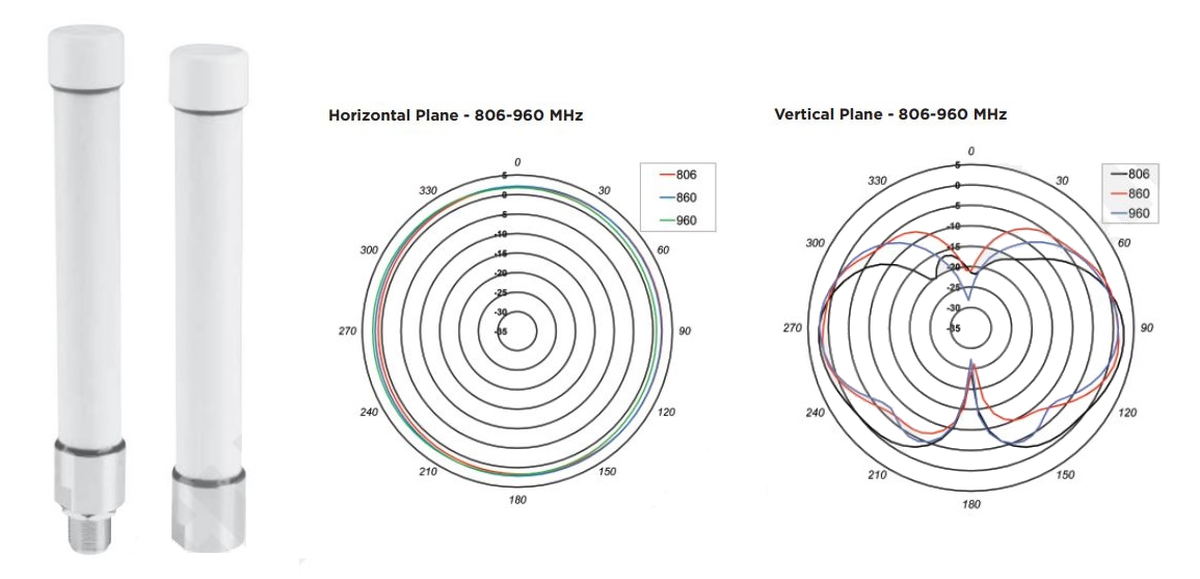LoRaWAN Gateway

With the aim of deploying the IoT network in the city of Terrassa, which is based on LoRa/LoRaWAN technologies, and after carrying out a coverage study fed by a good digital model of the city's orography, the number of gateways/antennas needed to guarantee an adequate level of coverage in the city has been estimated at an initial number of 7.
Gateways are probably the most important component of a LoRa/LoRaWAN network architecture. Each gateway is registered to a LoRaWAN network. A gateway receives LoRa messages from end-devices (and sending data back to them) and simply forwards them to the LoRaWAN network server (The Things Network Stack V3 in the case of Terrassa).
Gateways are connected to the internet through an IP backbone. IP traffic from gateway to the network server can be backhauled using different technologies, like mobile links (3G/4G/5G), WiFi, Ethernet, Fiber-optic or radio links.
Gateways
The gateway chosen to provide coverage for the city was the Multi Connect Conduit IP67 from Multitech, wich is a ruggedized IoT gateway solution, specifically designed for outdoor LoRa™ public or private network deployments; LoRaWAN and 868MHz and 915MHz bands are supported.

This solution is capable of resisting the harshest environmental factors including moisture, dust, wind, rain, snow and extreme heat, supporting LoRaWAN applications in virtually any environment and supporting thousands of LoRaWAN end-nodes.
Antennas
Every gateway needs an antenna for receiving/transmitting, and the solution chosen for our network was the Outdoor 3G Radome Omni 4 dBi Antenna, wich is a high gain antenna. The frequency range covers the LoRaWAN bands (Europe band in our case) with peak gain levels of 3 and 4.5 dBi.

The white antenna covering (aka radome in telecommunications) is UV protected and IP-67 rated, and it has been tested to wind loading of 200 km/h. Also is designed for installation on a mast or external wall.
Your cookie preferences
We use cookies and similar methods to recognize visitors and remember their preferences. To learn more about these methods, including how to disable them, view our cookie policy.

